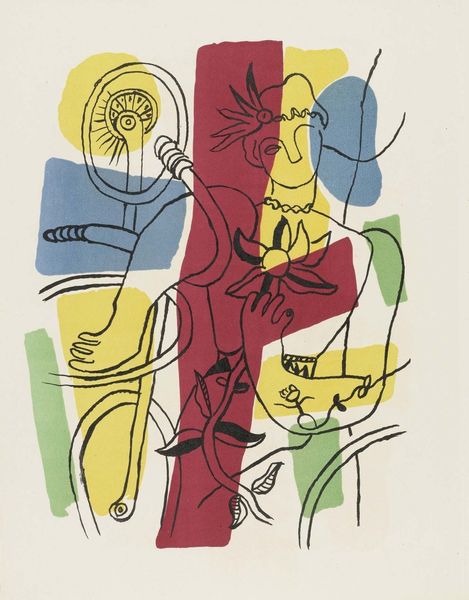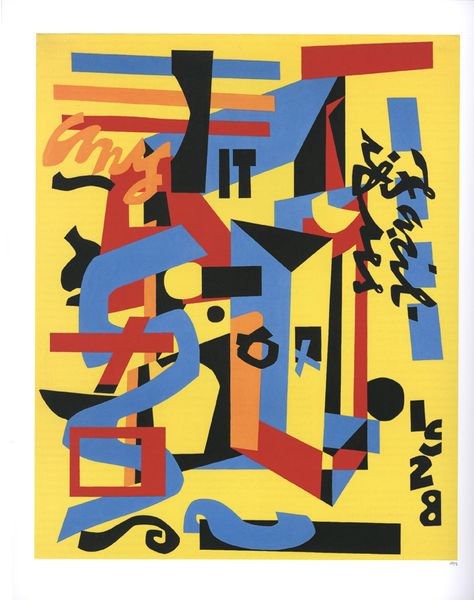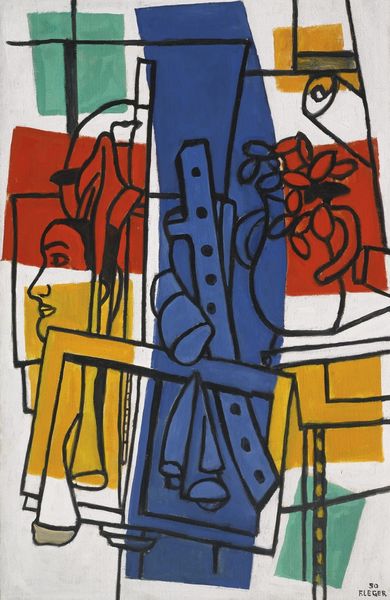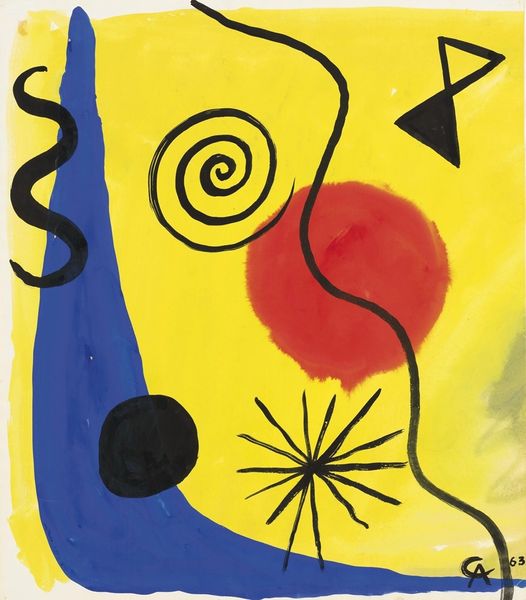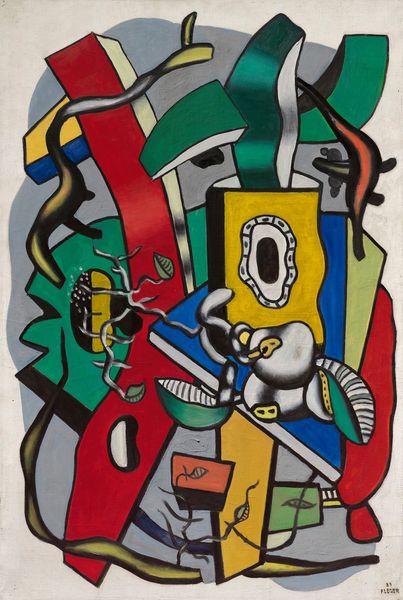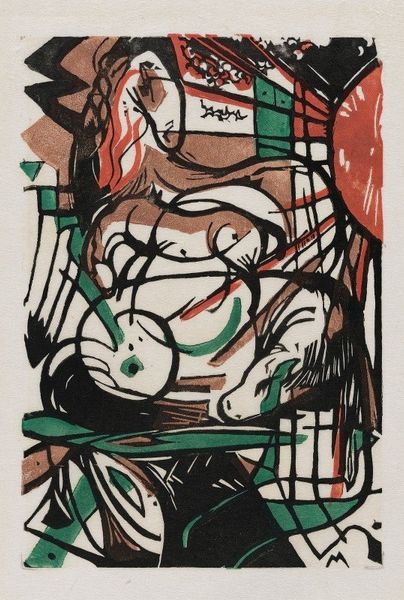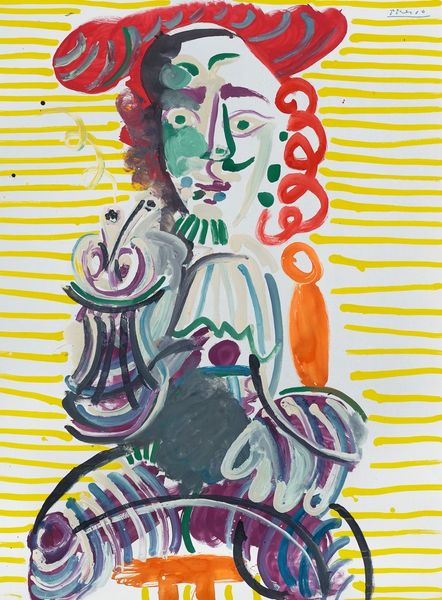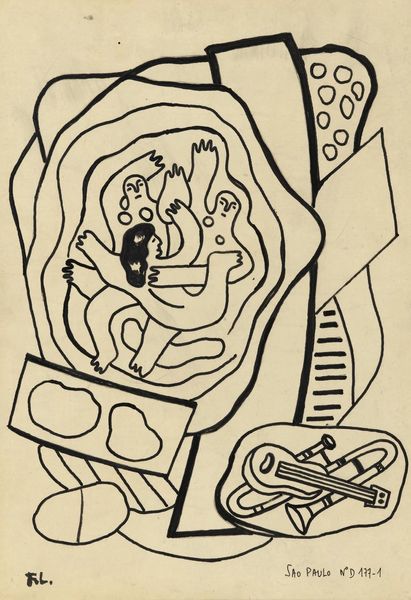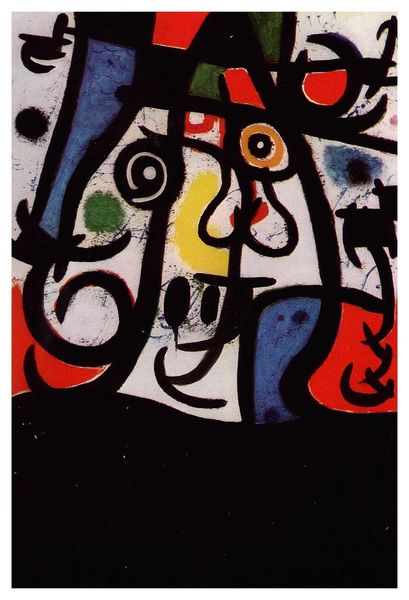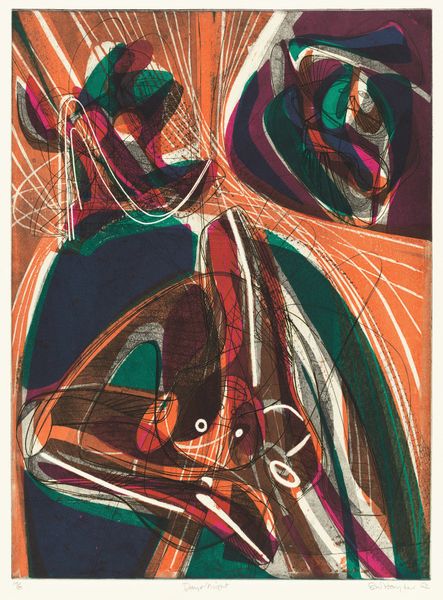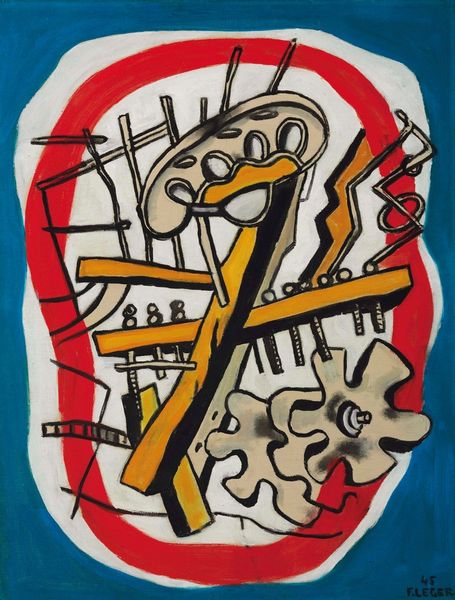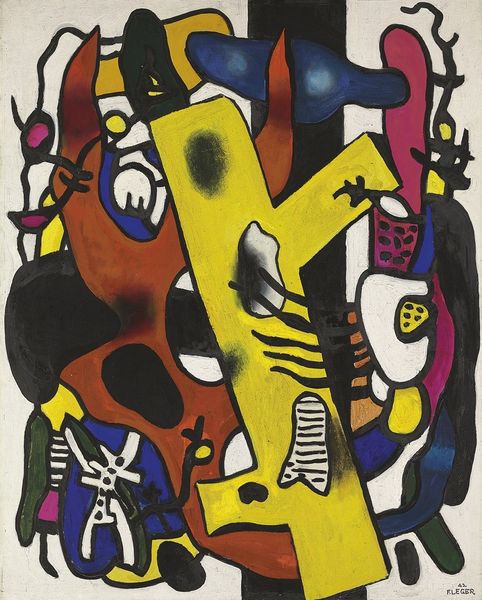
#
neo-pop
Copyright: Modern Artists: Artvee
Editor: We’re looking at Keith Haring’s “International Volunteer Day” from 1988, an acrylic and ink drawing. I’m immediately struck by the interplay of the simple, bold lines and colors. It feels joyful, but also like there's more to it than meets the eye. How do you interpret this work, considering its title? Curator: The title is key. Haring created this piece during the late 1980s, a period marked by the AIDS crisis and intense political upheaval. Volunteerism was – and remains – a powerful act of resistance and solidarity. Editor: So, it's not just about surface-level happiness? Curator: Not at all. Notice the figures. Their bodies intertwine, sharing, giving, receiving. The geometric shapes – the circles, for instance – might represent shared resources or even the Earth itself, emphasizing global responsibility. What does the dynamism of the lines suggest to you? Editor: Maybe a sense of constant action and participation, of communities coming together. Is Haring’s choice of such vibrant, almost cartoonish imagery a deliberate strategy? Curator: Absolutely. Haring was deeply committed to accessibility. He used a visual language that resonated across class, race, and age. It’s a deliberate choice to democratize the message of activism. The energy and directness of his pop art style break down barriers and invite the viewer to engage. It challenges the traditional art world's exclusivity and champions art's role as a tool for social change. Editor: It makes you consider volunteer work as a more active, visible part of everyday life. I see how the drawing creates space for this conversation and prompts me to think about art’s ability to activate change. Curator: Precisely. Haring’s art wasn't confined to galleries; it was on subway walls and in public spaces, speaking directly to the people. In this drawing, he challenges us to examine our own roles in creating a more just and equitable world.
Comments
No comments
Be the first to comment and join the conversation on the ultimate creative platform.
